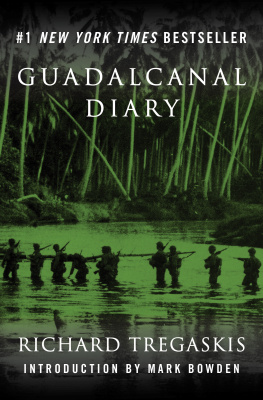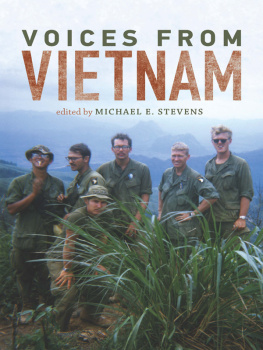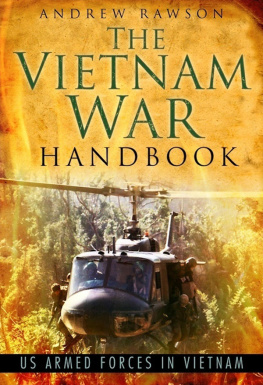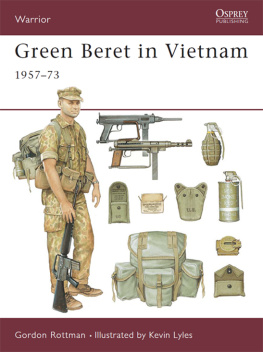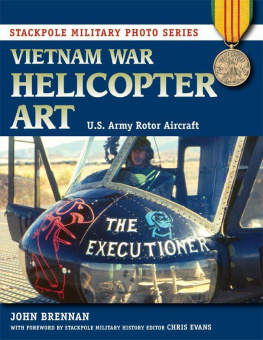

This edition is published by PICKLE PARTNERS PUBLISHINGwww.picklepartnerspublishing.com
To join our mailing list for new titles or for issues with our books picklepublishing@gmail.com
Or on Facebook
Text originally published in 1963 under the same title.
Pickle Partners Publishing 2014, all rights reserved. No part of this publication may be reproduced, stored in a retrieval system or transmitted by any means, electrical, mechanical or otherwise without the written permission of the copyright holder.
Publishers Note
Although in most cases we have retained the Authors original spelling and grammar to authentically reproduce the work of the Author and the original intent of such material, some additional notes and clarifications have been added for the modern readers benefit.
We have also made every effort to include all maps and illustrations of the original edition the limitations of formatting do not allow of including larger maps, we will upload as many of these maps as possible.
Vietnam Diary
Richard Tregaskis
TABLE OF CONTENTS
Contents
Arrival
Tuesday, October 9, Over the Pacific
This is going to war, modern style-and comfortably thus far. Ive been able to hitch a ride with a group of brass, heading down to Vietnam.
Most of these generals and colonels (and one ambassador) came up to Hawaii four days ago in this same aircraft, a big Boeing 707 model. (Military model means that it is a transport, freighter-style, with no windows-an aerial submarine, they say-a view of the outer world being cut off in the name of military austerity and functionalism. But inside there are reasonably comfortable seats.)
The brass came up for a conference with Defense Secretary Robert S. McNamara and staff (who jetted down from Washington, D.C., to meet them and the Pacific commander, Adm. Harry D. Felt). The conference lasted one day (yesterday)one of a series, held every few months: the highest American command comes out to the Pacific to meet with the field commanders and deliberate on ways to win our running battle with the Communists in the hottest of the hot-war areas and our only shooting war -Vietnam.
Last night, the conference over and plans made for the conduct of the war against the Vietnam Reds for the next few weeks and months, Secretary McNamara and his staff roared off for Washington.
Today, at 12:30 P.M., the Southeast Asia military commanders took off in our big aerial submarine for Saigon and Bangkok. On board are Gen. Paul D. Harkins, chief of U.S. Military Assistance Command, Vietnam (USMACV), the U.S. Ambassadors to Vietnam and Thailand, the chiefs of a half-dozen military sections in Vietnam (some hush-hush, like the Special Forces), and some plain hitchhikers like me trying to get to Vietnam on various assignments.
I was lucky enough to find a seat, my over-all objective being to get a first-hand, eyewitness look at the strange, off-beat, new-style war in which we find ourselves engaged in the miserable little jungle country called Vietnam, which our nations leaders have decided is pivotal and critical in our Asian struggle with Communism. I am lucky to have military orders appropriate to my mission of writing a book about the war in Vietnam, and thus ride with such a distinguished array of brassbut within a few days I expect to be with people at the opposite end of the military scale, people who are engaged in combat against the Communist Viet Cong (VC).
I say it is a miserable little country because I have been there before, twice, and it would be dishonest to say that I enjoyed either time. The first time was in 1948, when the area was called French Indochina and a French Army, composed mostly of Germans and French African colonials, were battling to defeat the Indochina rebels. That war ended in 1954, when the French made peace with the Viet Minh at a Geneva parley, and Indochina was cut into four independent parts: Laos, Cambodia, and the two parts of Vietnam (the northern half a Communist state under Ho Chi-minh; the southern half eventually becoming a relatively free state and democracy under a Roman Catholic president, Ngo Dinh Diem).
Then, in 1957-58, I spent some unhappy months in the new Vietnamese republic, which was then feeling its oats as a self-determined nation free of French colonial control. The street names in Saigon had been changed from French to Vietnamese; for instance, the main drag, once called Rue Catinat, was renamed Duong Tu Do, or Liberty Street; the opera house, once a favorite target for rebel bombs when it was full of Frenchmen, was converted to a National Assembly or Congress. The gambling joints and opium dives that the French had countenanced (in fact, opium had been a lucrative French government monopoly) had been dosed, but the new independent government was struggling to repair war damage and make the place fit for tourists again and they had too much to do. They were already fighting a guerrilla war against the Communists in the mountains and the swampy Delta country south of Saigon.
On that trip, when I went back to write some magazine articles about Vietnam, and I drove the length of that rough country in a jeep, it was hardly a model tourist mecca. The usual Southeast Asian diseasessprue, hookworm, flatworm, roundworm, tapeworm, malaria, dysentery, tuberculosiswere well distributed, and so was the liberal coating of filth that keeps such things alive and flourishing.
I know from covering wars we Americans have been involved in (like World War II, Korea, China, Quemoy) that our GIs usually say whatever part of the world they are in is the worst in the world. Of course, they dont know, because nobody could claim our GIs have been everywhere in the worldnot yet, anyhow.
Now that a large group of Americans have been sent to the war zone in Vietnam (more than 10,000 American military men and women), and I am going there, I expect to hear them say that Vietnam is the rear end of the world, and for once they will probably be right.
However, living in Vietnam should be quite a lot more bearable because, with all those 10,000 Americans in the country, there will be American food (even if it is C-rations) and water made drinkable by military lister bags.
The contrasts between going to war today and 20 years ago, when I went into Guadalcanal with the Marines, are striking. Then, it took weeks aboard transport ships to get our forces into position to attack the Japanese. We chugged into Tulagi Bay at 15 knots, all in one powerful force. Heavy cruisers and destroyers provided a massive naval bombardment; an umbrella of dive bombers and fighter planes from aircraft carriers covered our assault. The big attack came on that one day, August 7, 1942.
Today, there is no one big D-Day: every day is D-Day and the front is everywhere. Vietnams long-continuing struggle against Communism lacks the punctuation of massive battlesbut casualties (mostly Vietnamese) come just as certainly. As for our forces, some are moved into position by ship nowadays, but a large number are flown in and evacuated by plane: Military Air Transport jets like this one, clipping along over Pacific clouds at five miles a minute, or one of the fleets of charter planes flown by civilian crews and carrying American military men and women on contract flights with the Defense Department (since we are short of good air transports); others are brought into the war zone in the old propeller-driven airplanes, some of them dating from late World War II, the Berlin airlift, and Korean war days.
Next page

